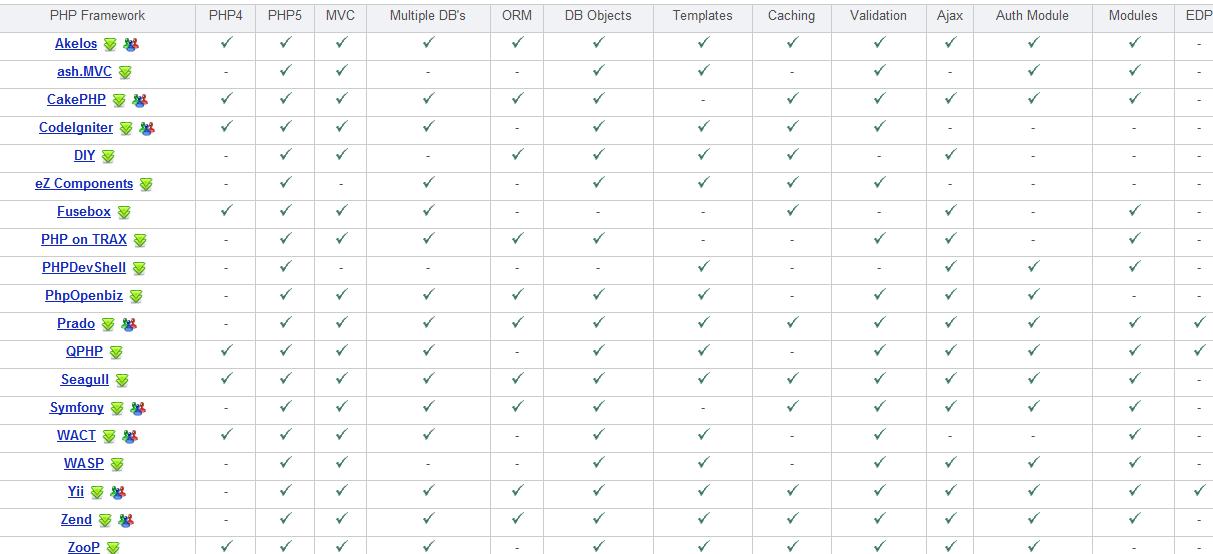PHP Frameworks
There are many frameworks....here is a comparison grid given to you by http://phpframeworks.com/
Note:
- MVC: Indicates whether the framework comes with inbuilt support for a Model-View-Controller setup.
- Multiple DB's: Indicates whether the framework supports multiple databases without having to change anything.
- ORM: Indicates whether the framework supports an object-record mapper, usually an implementation of ActiveRecord.
- onnects business objects and database tables to create a persistable domain model where logic and data are presented in one wrapping. It‘s an implementation of the object-relational mapping (ORM) pattern by the same name as described by Martin Fowler:
"An object that wraps a row in a database table or view, encapsulates the database access, and adds domain logic on that data."
- onnects business objects and database tables to create a persistable domain model where logic and data are presented in one wrapping. It‘s an implementation of the object-relational mapping (ORM) pattern by the same name as described by Martin Fowler:
- DB Objects: Indicates whether the framework includes other database objects, like a TableGateWay.
- Templates: Indicates whether the framework has an inbuilt template engine.
- Caching: Indicates whether the framework includes a caching object or some way other way of caching.
- Validation: Indicates whether the framework has an inbuilt validation or filtering component.
- Ajax: Indicates whether the framework comes with inbuilt support for Ajax.
- Auth Module: Indicates whether the framework has an inbuilt module for handling user authentication.
- Modules: Indicates whether the framework has other modules, like an RSS feed parser, PDF module or anything else (useful).
- EDP: Event Driven Programming.

Popular
According to phpframeworks.com the top popular frameworks are Yii and Codeignitor. We will discuss briefly Codeignitor.
